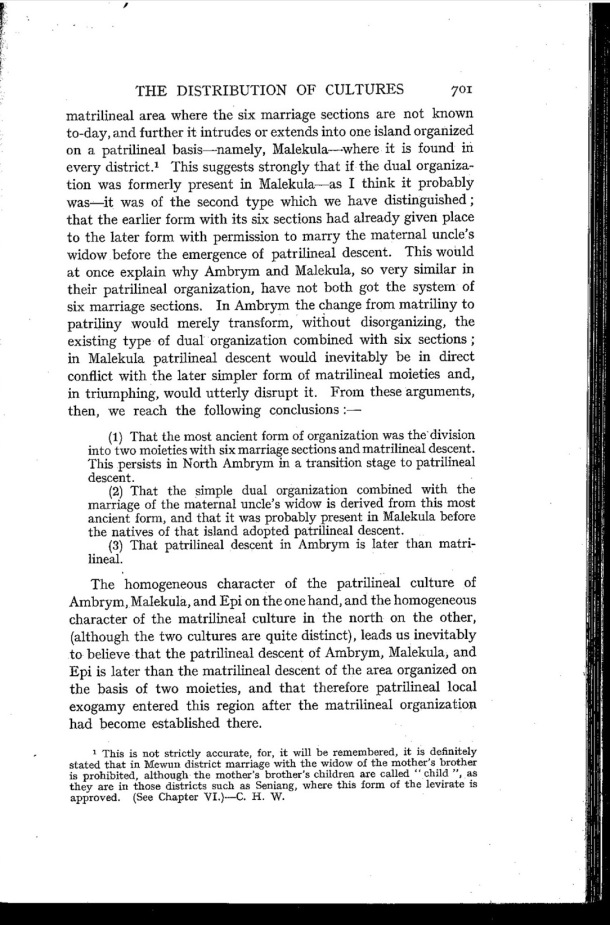|
|  [Note: this transcription was produced by an automatic OCR engine]
!
THE DISTRIBUTION OF CULTURES 701
matrilineal area where the six marriage sections are not known
toeday, and further it intrudes or extends into one island organized
on a patrilineal basisénamely, Malekula—where it is found in
every district.‘ This suggests strongly that if the DUAL organiza-
tion was formerly present in Malekulawas I think it probably
was—it was of the second type which we have distinguished;
that the earlier form with its six sections had already given place
to the later form with permission to marry the maternal uncle's
widow before the emergence oi patrilineal descent. This would
at once explain why Ambrym and Malekula, so very similar in
their patrilineal organization, have not both got the system of
six marriage sections. In Ambrym the change from matriliny to
patriliny would merely transform, without disorganizing, the
existing type of DUAL organization combined with six sections;
in Malekula patrilineal desoent would inevitably be in direct
conflict with the later simpler form of matrilineal moieties and,
in triumphing, would utterly disrupt it. From these arguments,
then, we reach the following conclusions :—
(1) That the most ancient form of organization was thedivision
into two moieties with six marriage sections and matrilineal descent.
This persists in North Ambrym in a transition stage to patrilineal
descent.
(2) That the simple DUAL organization combined with the
marriage of the maternal uncle’s widow is derived from this most
ancient form, and that it was probably present in Malekula before
the natives of that island adopted patrilineal descent.
(3) That patrilineal descent in Ambrym is later than matri-
lineal.
The homogeneous character of the patrilineal culture of
Amhrym, Malekula, and Epi on the one hand, and the homogeneous
character of the matrilineal culture in the north on the other,
(although the two cultures are quite distinct), leads us inevitably
to believe that the patrilineal descent of Arnbrym, Malekula, and
Epi is later than the matrilineal descent of the area organized on
the basis of two moieties, and that therefore patrilineal local
exogamy entered this region after the rnatrilineal organization
had become established there.
‘ This is not strictly accurate, for, it will be remembered, it is deï¬Ånitely
stated that in Mewun district marriage with the Widow Oi the mother's brother
is prohibited, although the mother's brother's children are called " child ", as
they are in those districts such as Seniang, where this [arm of the levitate is
approved. (See Chapter VI.)—C. H. W.
J,
vi
I.
ii
Hi
|
| |